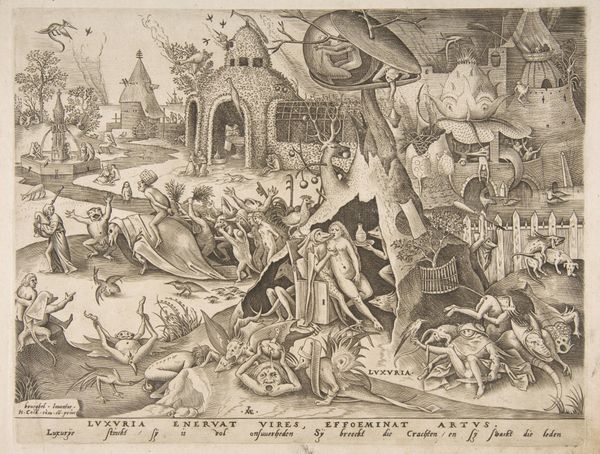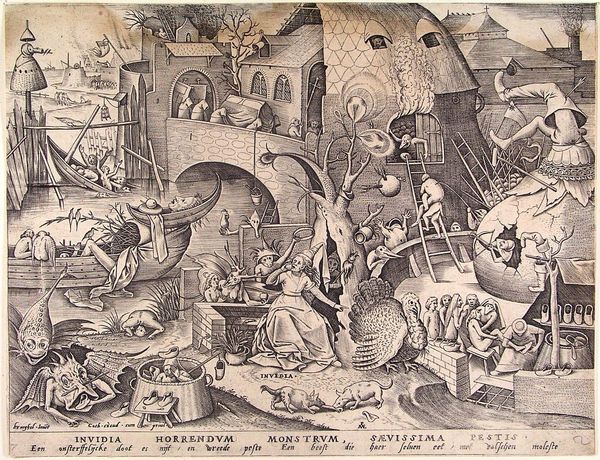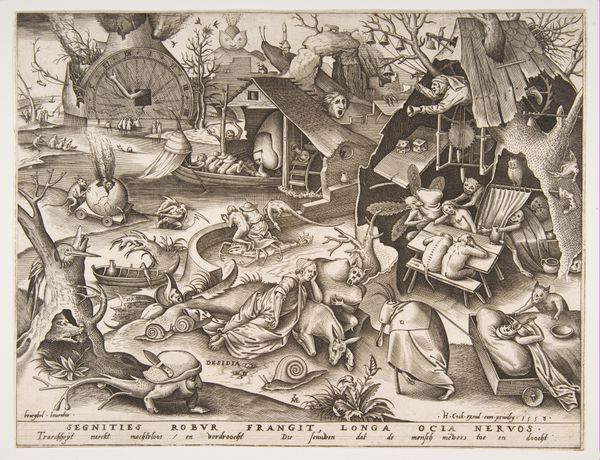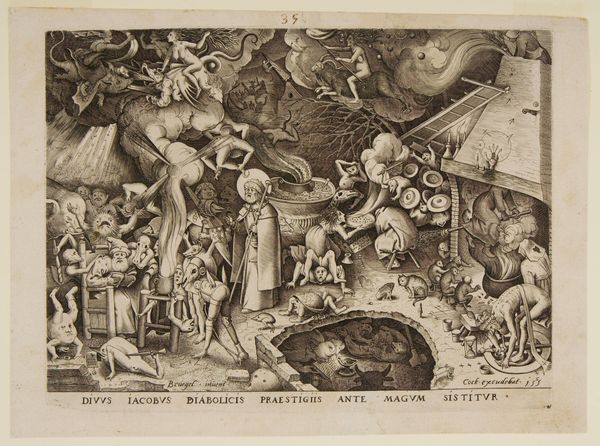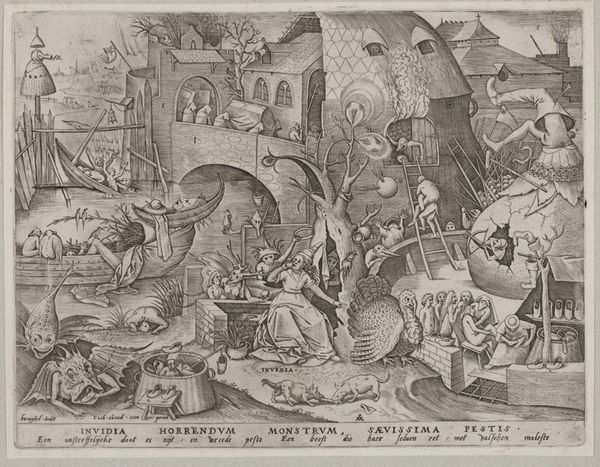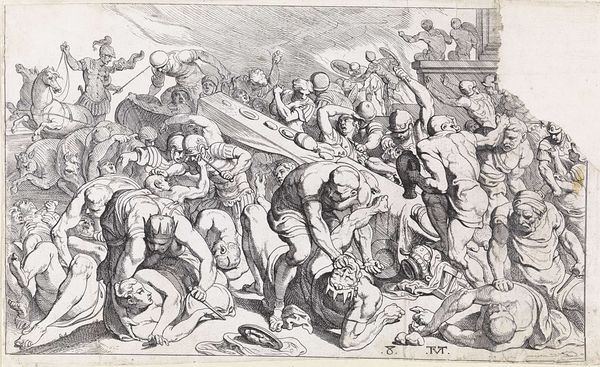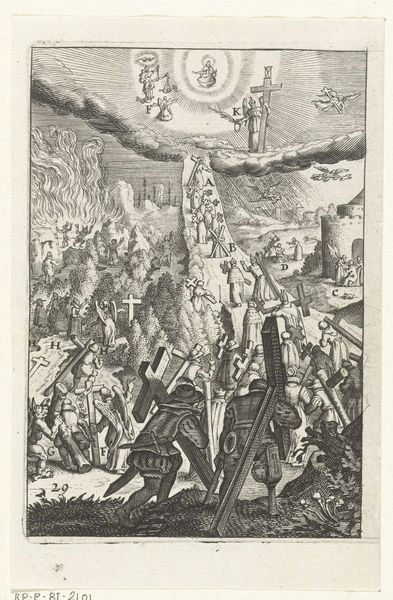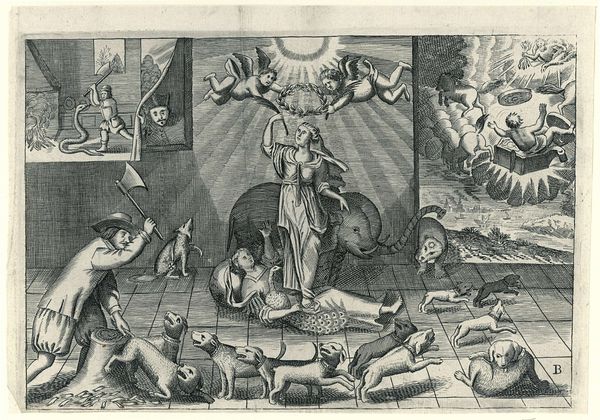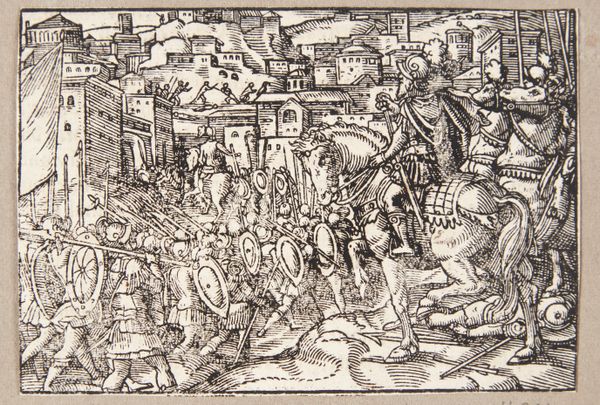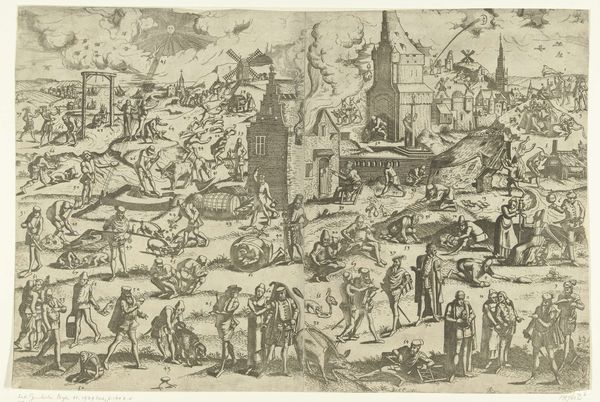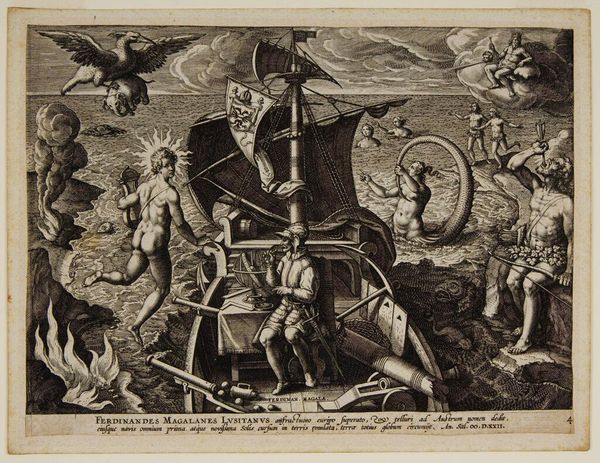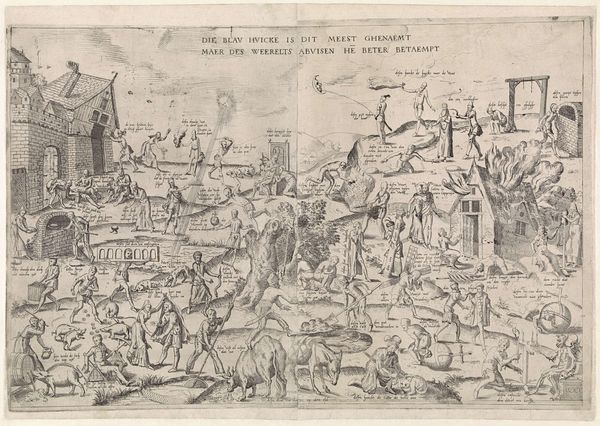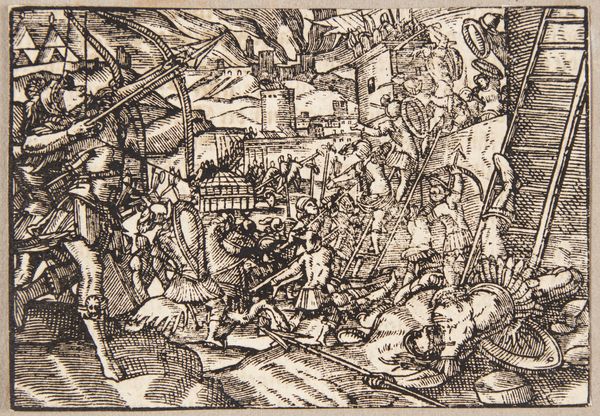
drawing, print, ink, engraving
#
drawing
#
medieval
#
allegory
#
narrative-art
#
pen drawing
# print
#
ink
#
christianity
#
genre-painting
#
history-painting
#
northern-renaissance
#
engraving
#
christ
Dimensions: 22.5 x 30.2 cm
Copyright: Public domain
Curator: Here we have Pieter Bruegel the Elder’s 1558 engraving, “Lust,” currently residing at the Museum of Fine Arts in Boston. Editor: My initial impression is chaos—a dark, teeming world overflowing with strange figures and unsettling details. The density of the composition is quite striking, almost overwhelming. Curator: Precisely. Bruegel, deeply embedded in the Northern Renaissance, presents an allegorical vision. The entire image is essentially a visual sermon. Look at the placement of symbols—the figures indulging in earthly pleasures, juxtaposed against crumbling structures that symbolize moral decay. Editor: Given it’s an engraving, how would the labor and production impact our interpretation of lust and temptation being depicted here? I am sure that process has implications that are not immediately obvious, particularly for the engraver working with metal as an allegory to morality. Curator: Indeed. Each character, rendered through fine, deliberate lines, represents a facet of lust and its consequences. You see the clear influence of Christian morality—the figures are grotesque, bestial even. These aren’t just representations of physical pleasure but rather, depictions of spiritual degradation. It’s not a simple cautionary tale; it is charged with religious and societal anxiety of that period. Editor: And the very act of reproducing these images, the means by which the ‘moral message’ spreads. I mean it speaks to materiality and circulation, doesn't it? Considering the physical act of creating such dense imagery for distribution begs the question, were his workshops churning out these condemnations? How many people encountered ‘Lust’ via these prints in a time before mass media? Curator: Fascinating question. The prints would allow the artist’s vision, this symbolic warning, to spread far and wide, reaching a much larger audience than a painting might. The scale here shifts with reproducibility. Editor: Bruegel’s "Lust" isn’t just a window into a specific moral code. The medium carries the message itself. Curator: Agreed. We witness a visual representation of cultural anxieties materialized through printmaking. Editor: Which in its own way, reveals the tension of Bruegel’s time, where mass production began encountering theological dogma.
Comments
No comments
Be the first to comment and join the conversation on the ultimate creative platform.
